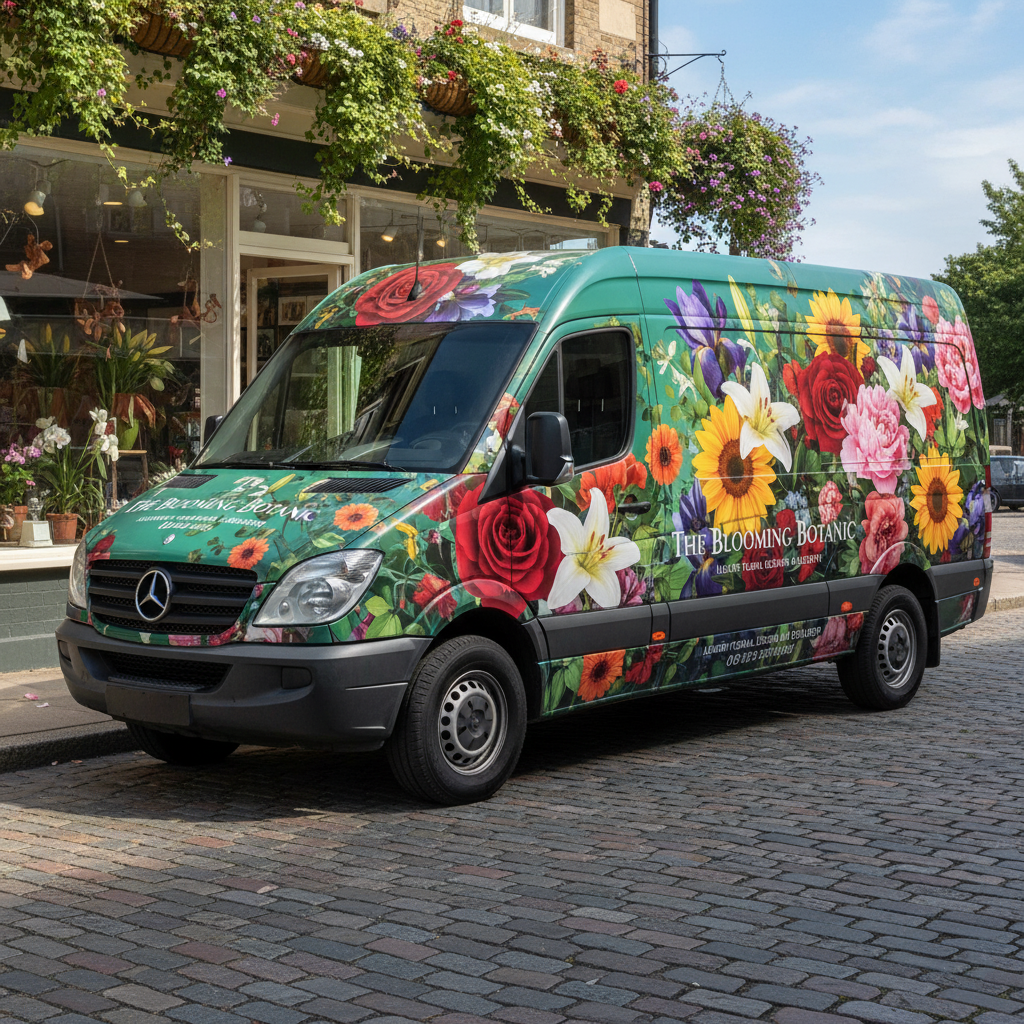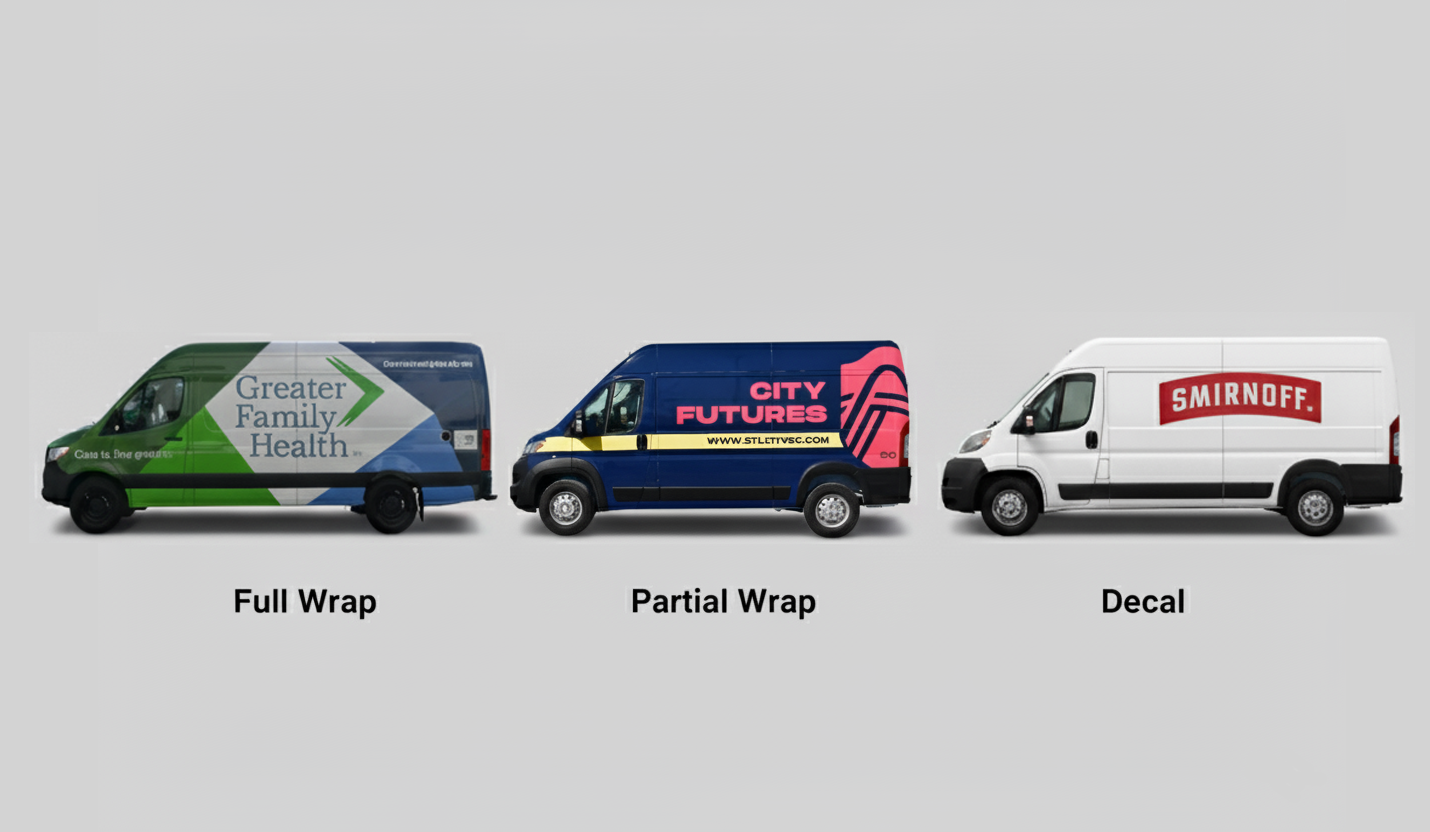Are Fleet Wraps Durable?
When it comes to your business advertising, you should explore all options and try different methods. One of the best ways to reach a broader target...

Fleet graphics are high-quality vinyl wraps or decals applied to company vehicles, turning every mile on the road into a moving advertisement. Beyond aesthetics, they help businesses reinforce brand identity, increase visibility, and deliver a professional impression to customers.
With proper routine maintenance, vehicle graphics typically last between 3 and 7 years. Premium cast vinyl options, such as those from 3M, can perform exceptionally well in vertical exposure, with some products warrantied or proven to last up to 7 years under optimal care.
This article will guide you through proven maintenance and protection strategies to help you maximize the return on your fleet graphics investment, ensuring your vehicles remain visually striking and continue to effectively promote your brand year after year.
Proper care of fleet graphics is crucial for extending their durability, maintaining their visual impact, and protecting your return on investment. Well-maintained wraps retain vibrant colors, adhesion, and brand visibility far longer than neglected ones. Without proper care, wraps can fade, peel, or become dull, resulting in a loss of impressions and professionalism.

For instance, a correctly maintained wrap can last over 7 years, especially when topped with a ceramic coating, versus degraded wraps that may only endure 3–4 years under poor conditions. This longevity sustains your branding on the road and minimizes replacement costs.
Neglected wraps often exhibit obvious signs of wear, including faded, sun-bleached artwork, lifting edges, or peeling in high-stress areas. These defects weaken credibility, lower brand recognition, and diminish ROI. In contrast, cared-for wraps continue delivering daily impressions (30,000–70,000 per vehicle) and maintain their protective function.
Several key factors influence the lifespan of fleet graphics. Understanding these helps you take the proper precautions. Let’s break them down, then transition into detail:
Extreme sun, humidity, and precipitation majorly affect wrap deterioration.
Tip: Whenever possible, park in shaded or covered areas, and consider applying a UV-resistant sealant or ceramic coating regularly to shield the wrap.
The nature of vehicle use has a direct influence on wrap condition.
Both scenarios require regular gentle cleaning, avoiding harsh brushes or pressure washers. Damage should be repaired promptly to prevent peeling from spreading.
Not all wraps are created equal. The quality of materials and installation has a dramatic impact on durability.
Installation matters too. A professional, bubble-free, well-aligned installation ensures adhesion to contours, proper edge sealing, and resistance to environmental wear.
Fleet graphics are an investment in branding, visibility, and long-term marketing. Proper maintenance is essential to maximize their value. A disciplined approach to cleaning, chemical use, parking, and inspections helps keep wraps vibrant and intact for years to come.

According to 3M’s official Wrap Care Guide, neglecting maintenance can shorten a wrap’s lifespan by several years, while consistent care can extend durability to the upper end.
Cleaning is the foundation of wrap care. Dirt, pollutants, and road grime gradually break down vinyl films if not removed promptly. Here are some tips:
The wrong cleaner can destroy even premium vinyl films. The following are the suggested methods:
Environmental exposure is one of the most significant factors affecting fleet wrap performance. Here are some valuable tips:

Routine inspection is critical for preventing minor problems from escalating:
Even with excellent maintenance, wraps are not a permanent solution. Whether to repair or replace them over time or after accidental damage must be decided.
Localized damage is often repairable without removing the entire fleet wrap:
Repairs are relatively quick and affordable. Industry data indicate that minor repairs typically cost between $50 and $150, depending on the extent and location of the damage. Downtime is minimal, usually a few hours.
Complete replacement becomes necessary when:
A full re-wrap restores a consistent, professional look and ensures continued protection of the vehicle’s surface. Costs vary by vehicle size and material quality but range from $2,500 to $6,000 for standard cars. Larger box trucks or specialty vehicles may be more expensive.
Balancing repair and replacement requires considering both direct costs and business impact:
Here are some key takeaways and figures to keep in mind:
Fleet graphics are one of the most cost-effective ways businesses advertise, often reaching thousands of impressions daily. However, a crucial question for fleet owners is: How long do these graphics realistically last before they need to be replaced? The answer depends on material type, installation quality, climate exposure, and maintenance practices.
While many providers advertise broad ranges, most experts agree that the realistic lifespan of professionally installed fleet graphics is between 3 and 7 years. Within this range, businesses can maximize return on investment by choosing high-quality materials, storing vehicles properly, and following recommended care guidelines.
The industry standard places the average wrap lifespan in the 3–7 year window. This range is sourced directly from manufacturers and professional installers who monitor wrap performance across various climates and vehicle types. According to 3M’s MCS Warranty Program, premium wrap films provide coverage for up to 7 years of vertical exposure, with the exact length varying by film type and geographic conditions.
On the lower end, 3 years is common for wraps exposed to harsh sunlight, high heat, or rough road conditions. On the higher end, achieving 7 years or more is possible when wraps utilize laminated cast vinyl, are stored indoors, and receive regular maintenance. This makes the care and environment of a vehicle just as crucial as the material chosen for it.
There is no single number that applies to all fleets. Instead, the true durability of graphics depends on a mix of variables. These include climate, material, installation quality, storage practices, and the vehicle's daily usage. Below is a breakdown of the most influential factors.
The weather is the most significant determinant of how long graphics look sharp. In sunbelt states, UV radiation and heat are particularly damaging, leading to fading, cracking, or adhesive breakdown in as little as three years.
On the other hand, cooler climates or areas with frequent cloud cover can extend vinyl’s life closer to the 7-year mark. Signature Graphics notes that vehicles exposed to direct sunlight daily degrade much faster than those parked in shade or indoors.
Not all vinyl is created equal. Cast vinyl, particularly from brands like 3M, is designed for long-term use and conforms better to vehicle contours. By contrast, cheaper calendared vinyl is more prone to shrinking, cracking, or peeling, often lasting only 1–3 years. Lamination also plays a vital role. Protective laminates serve as UV shields, resisting scratches and extending the wrap’s appearance and structural integrity.
Even the best material will fail prematurely if not installed correctly. Improper techniques, such as leaving edges unsealed or trapping air, cause peeling, bubbling, or early lifting. For this reason, 3M strongly recommends certified installers who follow manufacturer standards to maximize longevity.
Where vehicles are stored when not in use directly affects wrap life. Indoor parking or shaded lots protect against UV rays, bird droppings, and weather extremes. When indoor parking is impossible, using protective covers or rotating vehicle positioning can help minimize exposure.
Fleet graphics covering side panels usually last longer than those on hoods or roofs. Horizontal surfaces endure constant sun and road debris, making them more vulnerable. Additionally, vehicles used in heavy construction zones or on salted winter roads will naturally experience more rapid degradation than those limited to light city driving.
Regular care is one of the most overlooked yet powerful tools in extending fleet graphic life. Gentle handwashing with mild soap, avoiding abrasive brushes, and inspecting for minor issues like edge lifting can prevent minor problems from spreading. According to 3M’s maintenance recommendations, proper cleaning and inspections significantly reduce premature failure.
From a business perspective, maximizing the lifespan of graphics is not just about appearance; it’s also about protecting the bottom line. Fleet wraps are considered one of the most cost-effective advertising methods in terms of cost per impression. Extending a wrap’s life by even one or two years increases ROI, especially for large fleets.
Fleet graphics typically last 3–7 years, with the exact duration varying depending on factors such as climate, material quality, installation, and maintenance. Small businesses can ensure maximum ROI by investing in 3M-certified films and installers, parking vehicles indoors when possible, and following regular cleaning routines.
Fleet graphics should be cleaned every one to two weeks, depending on driving conditions and local climate. Regular cleaning prevents dirt buildup, which can wear down vinyl and reduce visibility. According to 3M’s graphic care guide, gentle hand washing helps extend the life of wraps and maintain their appearance.
No, pressure washers are not recommended. High-pressure water can lift vinyl edges, cause premature peeling, and damage the adhesive. If power washing is unavoidable, 3M advises using a low-pressure setting of under 2000 psi with a wide spray pattern and maintaining a distance of at least 1 foot from the surface.
The best option is indoor parking, which protects against sun, rain, and snow. If indoor storage is not possible, shaded areas or UV-protective covers help minimize sun exposure. Research indicates that prolonged exposure to UV radiation is a leading cause of vinyl fading and cracking.
Minor scratches or loose edges can sometimes be patched with heat and adhesive sealer, but this should only be done for small areas. A professional reapplication is required for larger damaged sections to ensure proper adhesion and color match. Quick DIY fixes can prevent further lifting, but trained installers should handle complete repairs.
Yes, high-quality vinyl wraps act as a protective layer. They shield paint from UV rays, scratches, and minor abrasions. 3M confirms that properly installed wraps can preserve the original factory paint, which may help maintain resale value when the wrap is removed.
Caring for fleet graphics is more than routine upkeep; it’s a direct investment in your brand’s visibility and long-term savings. From regular cleaning and avoiding harsh chemicals to proper storage and timely inspections, consistent maintenance ensures your graphics stay vibrant, professional, and effective throughout their lifespan. Well-maintained wraps can last 3–7 years, protecting your marketing spend and the vehicle’s paint, while neglected graphics often fade, peel, or require costly early replacements.
At Craftsmen Industries, Inc., we help businesses maximize the return on their fleet branding through premium materials, professional installation, and expert guidance on wrap care and maintenance. By following the best practices outlined in this guide, you not only extend the durability of your graphics but also safeguard your company’s reputation on the road.
Ready to keep your fleet looking its best? Explore our Fleet Graphics Services and Fleet Wraps to get started today.
.jpg)
When it comes to your business advertising, you should explore all options and try different methods. One of the best ways to reach a broader target...
/Landshark%20Sand%20rail%20-%20building%20wrap.png)
When it comes to protecting a building from the elements, few steps are as necessary, or as overlooked, as properly installing the building wrap....

Fleet graphics are professionally designed vinyl wraps or decals that transform company vehicles into mobile advertisements, enhancing brand...